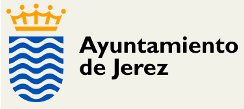CARVED COMB WITH DEPICTION OF HARE
Islamic Period
CARVED COMB WITH DEPICTION OF HARE
Ivory.
Length: 7.2 cm. Width: 2.5 cm. Thickness: 0.8 cm.
Hispano-Muslim. First decades of the 11th century.
Origin
Alcázar. Jerez de la Frontera. Cádiz.
Description
Fragment of comb with double row of teeth. One is thicker to untangle hair, and the other is finer for styling and brushing. This double structure was very common throughout the Middle Ages and performed both an aesthetic and practical function. The central part of the body depicts a running hare on both sides. This suggests that the full schematic decoration originally comprised two hares facing each other, perhaps framing a central plant motif as can be seen in other ivory Hispano-Muslim pieces. The type of carving (very round) and the shape of the hare's body are reminiscent of animals carved into the ivory box from the Cathedral of Braga, dated between 1004 and 1008. This example can therefore be dated back to roughly around the same time. Due to the scarcity and cost of the material, ivory objects have always been considered sumptuary pieces intended for the élite and possibly very influential segment of a small population.
Bibliography
- Unknown.
